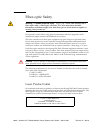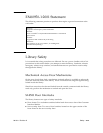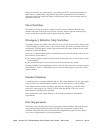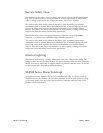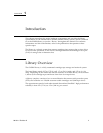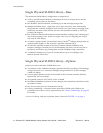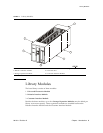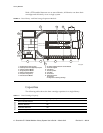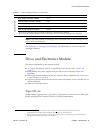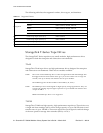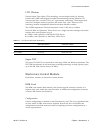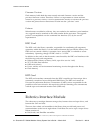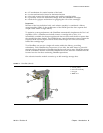
Library Overview
2 StreamLine™ SL8500 Modular Library System User's Guide • March 2007 Revision K • 96154
Single Physical SL8500 Library—Base
The minimum SL8500 library configuration is composed of:
■ A Drive and Electronics Module, containing from four to 64 tape drives and the
controlling circuit cards for the library
■ One Robotics Interface Module, containing up to 800 cartridge storage slots
■ Multiple HandBots (four – eight) that service four rails. They move horizontally
along rails and vertically along their individual Z axes. They retrieve cartridges from
both inner and outer walls (and the elevator and turntable assembly or CAPs) by
pivoting 180 degrees
■ One Customer Interface Module that contains 648 data cartridges slots, 198 diagnostic
and cleaning cartridges slots, 24 end slots (eight 3-slot arrays) for targeting and drop-off
cells,
and an LED display
■ A remote “operator panel” (StreamLine Library Console
TM
software that provides an
operator panel display on the customer’s personal computer [PC])
■ An elevator assembly located in the front (Customer Interface Module), that
transfers cartridges vertically across rail boundaries (elevator) or from one side of
the library to the other (by passing them to either HandBot using a turntable)
■ A standard cartridge access port (CAP) that allows up to 39 cartridges to be
entered/ejected at one time
Single Physical SL8500 Library—Options
Options for each stand-alone SL8500 library are:
■ A maximum of five additional storage expansion modules, providing 1,728 cartridge
storage slots each, to a maximum cartridge storage number of 10, 088 cartridges
within one library
■ A touch-panel operator control in the middle of the Customer Interface Module,
between the two access doors
■ An optional second CAP (CAP B) is also available
■ Redundant HandBots (maximum of four) that provide redundancy should one robot
encounter a failure
■ One service safety door for maintenance activity
■ Library partitioning—a licensed feature that allows SL8500 rails (LSMs) to be
partitioned for exclusive use by separate hosts. See “Library Partitioning” on page 22
for details.
A view of a library with one expansion frame is shown in FIGURE 1-1 on page 3.





